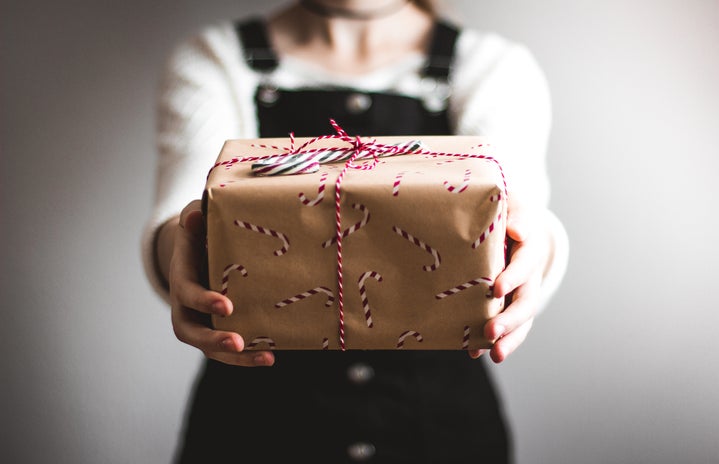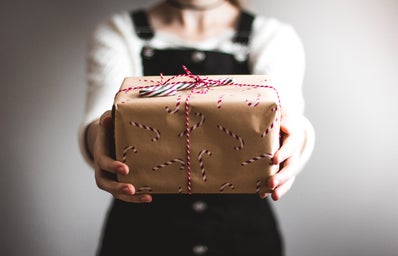A Finnish celebration is never complete without a good dose of depression and guilt. Some of the most beloved Finnish Christmas carols are elegantly gloomy and the hits on Christmas radio feature heartwarming stories about homeless people and cemeteries. Here is a list of some of the most depressing and guilt-inducing Finnish holiday rhymes and sneak peeks to their stories and backgrounds to get you to the right mood.
Most of the YouTube videos with links provided are only exemplary interpretations among many.
Classics
1. Varpunen jouluaamuna
Lyrics: Zacharias Topelius 1859 – Finnish translation by K. A. Hougberg 1874
Composition: Otto Kotilainen 1913
YouTube link: https://www.youtube.com/watch?v=7-hs_L3AYXk
This song is not just a Christmas song – it is an essential part of Finnish Christmas. Zacharias Topelius (1818–1898) is one of the most prominent figures in the history of Finnish literature, and has written many beloved poems and children’s stories, as well as historical books and novels.
Topelius lost three of his children while they were still very young. Especially the death of Rafael, who was only one year old as he died on his father’s arms, left a deep scar on Topelius. The profound sadness that event brought radiates from the lyrics of a poem Sparfven om julmorgonen which was later translated from Swedish into Finnish.
The first verse depicts Finnish nature in December, frozen and cold, while a little sparrow is starving having eaten everything that was left from the summer. A young girl then offers him some seeds:
It is Christmas, my homeless poor sparrow/ come to me with joy, take a seed from me
The sparrow takes up the girl’s offer and tells her that God will recognize her for helping others. Then this happens in the last verse:
My child, I am not a bird from this world/ I am your little brother, I came from the heavens/ The small seed you gave to a pauper/ was received by your little brother who came from the land of the angels
The last lines in the original poem in Swedish simply state that
When you served your bread gladly to a poor person in need/ you served to your little brother who died last spring
Whichever version one prefers, this song is guaranteed to make the Finns old and young listen with grave devotion.
2. Tuikkikaa oi joulun tähtöset
Lyrics: Elsa Koponen 1913
Composition: P. J. Hannikainen 1918 (Alternative composition by Armas Maasalo 1922)
YouTube link: https://www.youtube.com/watch?v=CdO0WbO7Ahw
A bit cheerless yet beautiful melody accompanies a poem by teacher Elsa Koponen (1885–1977). The song begins with somewhat happy lyrics:
Twinkle oh, little stars of Christmas/ together with the starry eyes of the children/ may you tell the story of Christmas/ always as new, always as wonderful,/ as entertaining as it was a long time ago as a child
There are a couple of different explanations for the sad tune of the poem, but according to Koponen’s niece Irja Ahola, Koponen had realized during Christmas celebrations at her school that her fiancée was worlds away from her and in the end, one would always be fundamentally alone. Seeing the children sing and enjoy Christmas carols made her write a story that foresees the end of the pure magic that children experience during this time of the year and the step into the crude reality of the world. The third verse translates as:
Once the fairytale of Christmas will come to an end/ sadness will dim the melodies/ once the eyes will be full of tears/ the waters of distress will overflow/ thus oh, starry eyes sparkle now
3. Sylvian joululaulu
Lyrics: Zacharias Topelius 1853 (Finnish translation by Martti Korpilahti 1918)
Composition: Karl Collan 1855
YouTube link: https://www.youtube.com/watch?v=I4DP_EENhTU
Another beloved Christmas poem by Z. Topelius. It is a fascinating story from the viewpoint of Sylvia, a bird of the species of Eurasian blackcap (Sylvia atricapilla). Sylvian joululaulu (Sylvia’s Christmas song) is part of a series of three poems called Sylvia’s songs. The original poem in Swedish has four verses, whereas the commonly used Finnish translation merges the second and third verse into one.
Sylvian joululaulu is a romantic poem about freedom. Even though it pictures the exotic scenery in southern Italy, Topelius was in Finland when he wrote the poem. The times were tough for him though, so he dedicated himself to writing.
In the first verse, Sylvia sends her regards back to Finland, from where she has migrated for the winter. The last line is:
But up on the roost there is still/ the cage that confines my chirping friend/ and in the prison the weeping has ceased/ Oh, who would be the one to listen to the sorrows of the singer?
The second verse tells us that the narrator is sitting up in a tree, appreciating the beautiful scenery of Sicily. Thus the singer in the cage is not Sylvia herself, but, as the original Swedish version says her trognaste vän, her most trusted friend. This is an actual reference to an Italian practice, where one bird of a species is captured, blinded and left in a cage singing so as to lure other birds to the trap. The destiny of Sylvia’s lover is quite sad indeed. In addition, the original third verse in Swedish tells about a visitor from the north, who sleeps in his grave at the foot of Etna. The visitor may well be Sylvia’s lover, and this would indicate that he is already dead.
In the third verse of the Finnish version Sylvia confesses her love to Finland, the country she left and desperately misses:
I will never get anything on a par with her/ my most beloved and treasured will always be Finland!/ And thanks to her sounds the song of Sylvia/ and it will always ring as the most melodic song.
The same lines in the original Swedish version encapsulate the feelings of freedom, hope and homesickness perhaps even better:
In blooming springtime, on golden beach/ where is there a land like my fathers’ land?/ For you I will sing about love and spring/ as long as your Sylvia’s heart still beats
The popularity of the song is both based on the hauntingly beautiful melody and on the love of motherland and freedom it depicts. The cage has also been read as a metaphor for autonomous Finland under the Russian imperial rule.
Guilt trip
4. Me käymme joulun viettohon
Lyrics: Mauno Isola at the beginning of 1930’s
Composition: Martti Turunen 1934
YouTube link: https://www.youtube.com/watch?v=EWRzvglBe2s
Up to this day, Me käymme joulun viettohon (We begin the celebration of Christmas) is still one of the most played Christmas songs. Poetic and sensitive esquire Mauno Isola (1889–1945) wrote the poem originally called ‘Jouluna’ (At Christmas), with the excessive consumption and materialistic celebration affiliated with contemporary Christmas in his mind. Infamously, this song features the surprisingly cruel metaphor about the holy child drowning and freezing alone in the snow.
The first and second verses tell about the typical material preparations before Christmas, while also reminding us of a child that might have been forgotten amidst all of this. The third verse is revealing:
Everything is superfluous and in vain/ all this hassle is futile/ We all go on with cold hearts/ if the child is tossed aside/ The presents we receive are plentiful,/ the child only gets his empty lovely hands
The last verse advises us to also bring gifts to the holy child and probably leaves us wondering where all the desire to open the presents disappeared.
5. On jouluyö, nyt laulaa saa
Lyrics and composition: Ismo Alanko
YouTube link: https://www.youtube.com/watch?v=gxPMHu-XOnU
Christmas songs by Finnish rock bands constitute a genre of their own, many of them expressing almost repulsive naturalism or farce-like depictions of Christmas where everything goes wrong. As they are in the borderline of being comical (and very seldom actually played on the radio, the only exception being Juice Leskinen’s Sika), most of them are left out of this list. However, On jouluyö, nyt laulaa saa (It is Christmas night so we may sing) by rock band Hassisen kone deserves to be mentioned for being beautifully depressive and a strong opposition towards hypocrisy.
When the Son showed the way, our fathers only noticed the Son/ They worshipped him and forgot about the way
Published in 1981 and dedicated to certain critics of Alanko’s songs, the lyrics include a powerful message from the world of the cold war – a message that sadly is still topical in today’s world.
The beautiful candles of the Christmas tree flicker silently/ the face of baby-Jesus casts its bright light/ and the cannons blast death and the scent of napalm lingers/ when the major places his orders on the name of the child of Christmas/ It’s Christmas night and we may sing
Lonely and alone
6. Konsta Jylhän joululaulu/ Konstan joululaulu
Lyrics: Paul Holm
Composition: Konsta Jylhä
YouTube link: https://www.youtube.com/watch?v=5iXc51lXFGw
Konsta Jylhän joululaulu simply translates as Konsta Jylhä’s Christmas song, and is also known as Konstan joululaulu, its official name being solely Joululaulu.
Konsta Jylhä (1910–1984) was a Finnish composer and a fiddler. This song was composed after 1974, as Jylhä had had a personal experience of finding God. Paul Holm is a pseudonym used by Paavo Helistö (1934–2017), a Finnish journalist, author and critic. The story is of a small child who takes a walk to the cold cemetery and lights a candle on her mother’s grave. The song goes on elaborating the darkness and loneliness the child experiences.
When will she ever have Christmas/ when will she be able to laugh/ together with others again? / But the home of the lonely/ is so silent/ as if its blessings were missing
While listening to the melody, you can almost feel the chilly winds of winter. During the third and the fourth verses, however, the child hears the voice of Jesus, who encourages her to go on and tells her that she will not be alone for Christmas.
Do not drown in your worries/ hold your head up high/ At every moment I walk with you/ I am the child of Christmas/ I will take you to the mansion/ where you left, I will be the light you see
After Mauno Kuusisto in 1980, it has been performed by numerous artist and is a frequent in Finnish radio waves during Christmas holidays.
7. Kaksi kynttilää
Lyrics: Jorma Toiviainen
Composition: Jori Sivonen
YouTube link: https://www.youtube.com/watch?v=QkzRX3FaO-c
This neo-classic is a constant in the Christmas concerts of Laulumiehet, a prestigious quasi-academic male choir based in Helsinki. (Source: https://www.laulumiehet.fi/ ) The most common version, however, is performed by popular artist Jari Sillanpää, who recorded it in 1996. During a Christmas concert in 2016, he was himself reduced to tears while singing Kaksi kynttilää. (Source: https://www.ruutu.fi/video/2856724 )
A somewhat bleak melody and touching lyrics about an elder who visits a grave (a frequent theme in more recent Christmas songs) are the core of this song. The elder is depicted crying and kneeling before the grave stone. The chorus follows:
She lights the two candles/ and touches the wooden cross/ and then once more for a short time/ she can be with her love
The end of the second verse narrates how the elder is still there, lost in her memories, while other people are leaving the cemetery.
Other recommendations
Joulu ensimmäinen – lyrics Kari Tapio, composition Jari Puhakka
Jouluyön hiljaisuus – lyrics Timo Mäenpää, composition Jori Sivonen
Kirje Korvatunturille – lyrics Reino Helismaa and Veli-Juhani, composition Toivo Kärki
Joulurauhaa – Lyrics and composition by Timo Koivusalo
Jouluksi mummolaan – lyrics and composition by Gösta Sundqvist
The introductions of songs 1–4 are based on book Taas kaikki kauniit muistot – Joululaulujen taustat ja tarinat by Reijo Pajamo (1982, WSOY). Pictures in order of appearance: pexels, Vincent van Zalinge on Unsplash, pexels, pixabay. Thumbnail: Pexels



